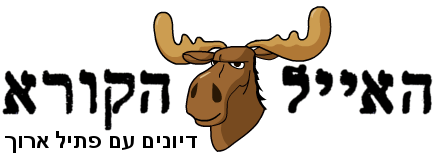 |
|
 |
||
|
||||
 |
מתוך The Economist, גליון 19 באוקטובר 2002: Languages abound in South Africa: it has 11 official ones, and dozens of unofficial. But the death on October 7th of Elsie Vaalbooi, aged about 100, saddened linguists. She was one of the last speakers of nlu, a click-based dialect of the once-nomadic San people. Only a handful of her aging relatives can still use nlu, the last known example of !Ui, a family of San languages spoken across southern Africa by hunter-gatherers, possibly for the past 30,000 years. It is now, it seems, about to expire.
According to UNESCO, the UN's cultural body, half the world's 6,000 or so languages could die within a generation. Indigenous, nomadic groups, such as Australia's aborigines (with 400 languages) and southern Africa's San, have rich deposits of old languages. But they are vulnerable as traditional lifestyles die. Of an estimated 1,400 African tongues, 500 are in decline, half of them facing imminent extinction. Mrs. Vaalbooi had become a campaigner for the San tongues. "I want our language to come back. I want our water, our animals, our plants," she said as South Africa's government returned 40,000 hectares (100,000 acres) to her Khomani community in 1999. Her activism was matched by historians who say that the study of long-isolated languages will reveal the origins of human speech. Remarkably, !Ui and a cousin language in Botswana, !Xoo, have proved more complex than almost any other. Spoken languages usually employ just 20 sound units or phonemes. English-speakers have 55 of them, but !Ui-speakers use more than 140, says Nigel Crawhall of South Africa's San Institute. Study of such a complex language should reveal more about hunter-gatherer cultures. But time is short. When Mrs. Vaalbooi died last week, there was almost nobody left to say "!hoi ca", goodbye, in her mother tongue. |
 |
 |
 |
|
 |
||
|
||||
 |
איך מבטאים בדיוק סימן קריאה שמופיע כאות ראשונה? (או שזה היה אמור להופיע בסוף? עדיין...) !Ui, !Xoo, !hoi ca
|
 |
 |
 |
|
 |
||
|
||||
 |
אם אינני טועה, מדובר ב"קליקים" שמאפיינים את שפת (או שפות) ה"קונג" (או "!ונג"). כדי להשמיע את הקול, נסה לצקצק בלשונך, אבל לעשות זאת עם החלק האחורי של הלשון, כך שהקול שמושמע הוא מעין "קליק". |  |
 |
 |
|
 |
||
|
||||
 |
דוגמא לשפה המשתמשת בצלילים מסוג זה אפשר לשמוע בסרט "כולם נפלו על הראש" (במקור: The Gods Must Be Crazy). השחקן הראשי נקרא (במציאות) N!xau, והוא דובר בשפתו האמיתית בסרט (קומדיה משובחת בפני עצמה, אגב). עוד על הסרט: http://www.imdb.com/title/tt0080801/ |
 |
 |
 |
|
 |
||
|
||||
 |
אני דווקא זוכר את השם בעברית כ"האלים משתוללים". נדמה לי שעשו עוד סרט בסדרה1 ואולי הוא נקרא בעברית "כולם נפלו על הראש". 1 משהו עם מטוס קל שנוחת נחיתת אונס במדבר קלהרי, אישה וקוף(?). |
 |
 |
 |
|
 |
||
|
||||
 |
מדובר בשני סרטים, הראשון מספר על בושמני שמצא בקבוק קוקה קולה, החליט שמדובר במתנה מהאלים ויצא למסע לקצה העולם במטרה להשיב לאלים את המתנה. הסרט השני שהוא פחות מוצלח (לטעמי) מספר על מטוס שהתרסק במדבר. בשני הסרטים יש גבר ואישה מערביים שמתאהבים (אני לא בטוח אם מדובר באותם אנשים או לא), קופים אני לא זוכר. הראשון נקרא משהו בסגנון האלים משתוללים והשני משהו בסגנון האלים נפלו על הראש. |
 |
 |
 |
|
 |
||
|
||||
 |
הוא שאמרתי. |  |
 |
 |
|
 |
||
|
||||
 |
הראשון נקרא ''כולם נפלו על הראש'' והשני ''ממשיכים ליפול על הראש''. קטע זכור במיוחד ששזור לאורך חלק גדול מהסרט הוא הריצה חסרת המעצורים של האיש בעקבות ילדיו. |
 |
 |
| חזרה לעמוד הראשי | המאמר המלא |
| מערכת האייל הקורא אינה אחראית לתוכן תגובות שנכתבו בידי קוראים | |
 RSS מאמרים |
כתבו למערכת |
אודות האתר |
טרם התעדכנת |
ארכיון |
חיפוש |
עזרה |
תנאי שימוש והצהרת נגישות RSS מאמרים |
כתבו למערכת |
אודות האתר |
טרם התעדכנת |
ארכיון |
חיפוש |
עזרה |
תנאי שימוש והצהרת נגישות
|
© כל הזכויות שמורות |
